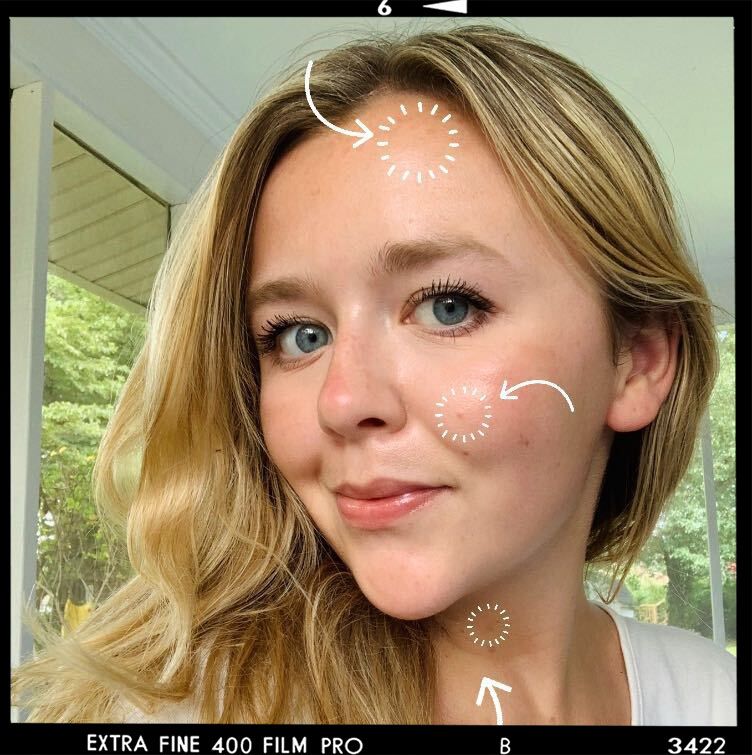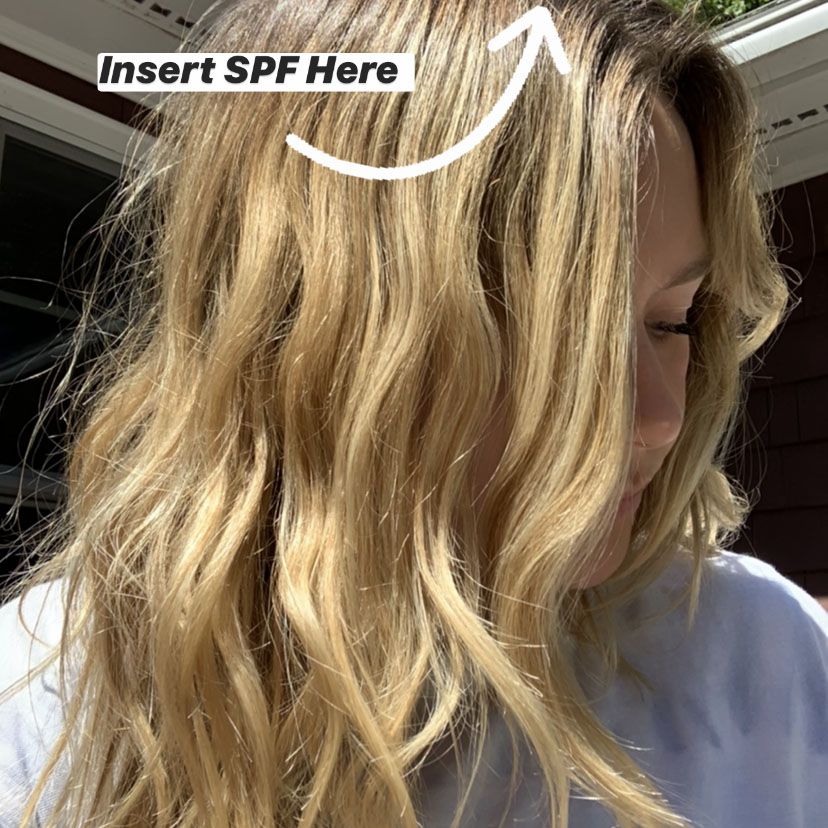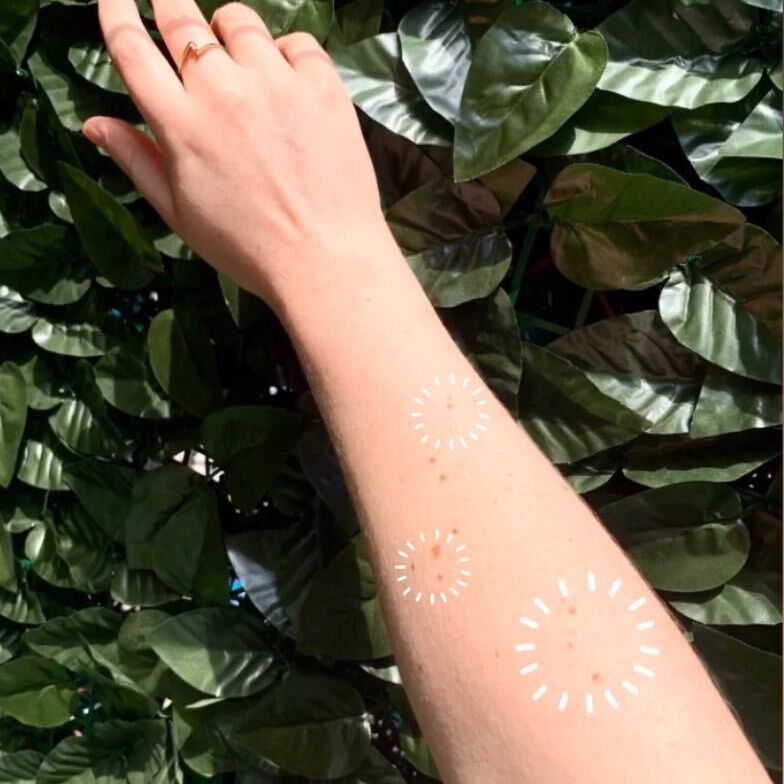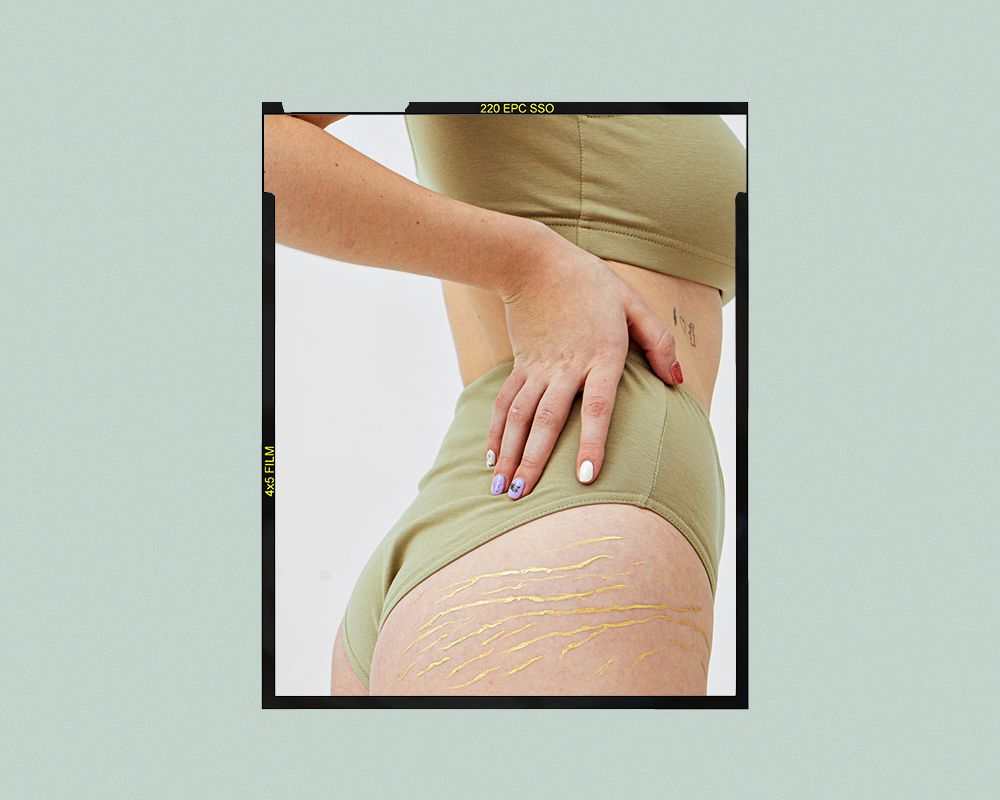Everything You Need to Know About Mole Removal, From Someone Who's Had 20+ Removed

When my Irish Grandmother met my Grandfather in the ’50s, I ended up inheriting more than a penchant for Guinness. Ever since I can remember, I’ve been covered in constellations of freckles and moles across my nose, arms, and shoulders. I grew up in a coastal town right on the Chesapeake Bay, so almost everyone around me has some sun spots. (In my hometown, they’re marks of a summer well-spent.) It never seemed abnormal to have these lesions until, one day, a mole popped up out of nowhere on my scalp, right along my hair part. I ignored it, until I woke up one morning to find my white pillowcase spotted with blood—coming from the mole on my scalp. A trip to the dermatologist revealed the mole was actually malignant (cancerous) basal cell carcinoma, and needed to be lanced immediately. Thankfully, it hadn’t spread elsewhere in my body, which means I was both diagnosed and declared cancer-free within a single day. Then and now, I’m grateful for that little lump—because in the 10 years since I had it removed, I’ve become serious about protecting my skin. And part of serious skin protection is seeing your dermatologist for an annual skin check, where you might learn you have a few “atypical” moles that need to be removed. As someone who’s had 20+ of these types of moles removed over the years, I can tell you that mole removal is no big deal, especially when you weigh the time it takes to get checked against the value of your life. But regardless, it helps to go into your appointment with a little information under your belt.
Ahead, find everything you need to know about mole removal, from identifying a lesion that needs to be removed, to the actual removal process, and beyond.
Meet the Expert
- Dr. Orit Markowitz is a board-certified dermatologist and the Director of Pigmented Lesions and Skin Cancer at Mount Sinai in NYC.
- Dr. Martha Viera is a published, awarded dermatologist based out of Flores Dermatology in Coral Gables, FL.
What Causes Moles to Form?
We’ve come a long way, but there’s still a lot of unknowns when it comes to skin cancer. The exact etiology of moles is currently unknown, although studies indicate that genetics and sun exposure appear to be key factors (and dermatologists agree). “Moles form the same way your hair and other parts of your body form, based on the roadmap your genes create,” says Dr. Markowitz. “Sometimes you can get new moles with repeat sun exposure.”
Who Is Most At-Risk For Mole Formation?
According to Dr. Viera, if any of the following factors apply to you, you’re at increased risk for mole formation (this includes benign, non-dangerous moles, as well as the formation of dangerous skin cancers, such as melanoma):
- If you have a history of repeat sunburn
- If you’ve had one or more severe, blistering sunburns
- If you’re fair-skinned
- If you’re naturally blonde or red-headed
- If you have light eyes
- If you tend to freckle easily
- If your skin never “tans”
- If you have used (or are currently using) tanning beds
- If you live close to the equator or at a high-elevation
- If you already have 50 or more “ordinary” moles, this increases your melanoma risk.
- If you have one or more “unusual” moles (moles that fit any of the ABCDE’s of skin cancer—more on that next), this increases your melanoma risk.
It’s important to note that even if you don’t meet any of these qualities, anyone can develop moles and/or skin cancer. No matter your inherent risk factor, you should be staying out of the sun as much as possible and wearing sunscreen every single day.
Are Moles Cancerous?
The short answer is no, but here’s where the language gets a little bit fuzzy. In the non-medical community, patients tend to use the word “mole” as a blanket term for any kind of dark, raised bump, be it cancerous or not. In actuality, moles themselves are not cancerous, but moles with certain qualities have the potential to *evolve* into dangerous skin cancers like melanoma. Dermatologists use the terms “usual” and “typical” to describe moles that lack the signs a mole has potential to evolve into a melanoma. These moles are not dangerous, and oftentimes they’re just genetic.
Alternatively, the terms “unusual” and “atypical” are used to describe moles that possess certain qualities that signal the potential for melanoma to develop. (See more on the qualities of an atypical mole below.) Therefore, moles aren’t actually cancerous themselves, certain moles just have the potential to evolve into skin cancer. Once the presence of cancer cells exists, the lump is no longer a “mole”—it’s skin cancer.

Signs That a Mole Should Be Removed
The most common values to look for to signal the presence of an atypical mole or skin cancer are commonly referred to as the “ABC’s” or, more modernly, the “ABCDE’s” (see breakdown below). And while these are certainly strong indicators that you should pay a visit to your dermatologist, Dr. Markowitz urges you to know that these values are not the best for early detection, as the ABCDE’s typically “Diagnose lesions that are already too advanced or are usually benign [non-cancerous] growths.” Instead, she recommends performing regular self-exams (in addition to your annual exam with your dermatologist), looking specifically for lesions that are new, dark, or rough in texture and not healing. With that being said, here’s what the ABCDE’s mean in regards to skin cancer diagnosis:
- A = Asymmetry: Moles that are irregular or asymmetrical in shape.
- B = Border: “Moles with irregular, notched, or scalloped borders are a characteristic of melanomas,” says Dr. Viera.
- C = Color: Look for growths that have “many colors or an uneven distribution of color,” she says.
- D = Diameter: Check for new mole growth that exceeds 6 millimeters (about 1/4 inch).
- E = Evolving: “Look for changes over time, such as a mole that grows in size, or changes color or shape,” says Dr. Viera. “Moles may also evolve to develop new symptoms, such as itching or bleeding.”
Can You Remove a Mole For Aesthetic Purposes?
If a mole is confirmed to not be atypical or to be skin cancer, you can absolutely have it treated if it bothers you. In these cases, if the mole is flat, it’s typically lightened to your skin tone with a laser, rather than lanced. (If the mole is raised, most cases require surgical removal.) For a “typical” mole, your dermatologist will first confirm their hypothesis that you have a normal mole that poses no risks by examining the mole with a confocal microscope. Following the confirmation of diagnosis, you’ll be numbed and treated with a cosmetic laser to lighten the mole. Just remember that there isn’t any medical reason for you to have typical moles removed—it’s entirely up to you (and your dermatologist).
Using Home Remedies For Mole Removal
Hopefully this doesn’t come as a surprise, but under no circumstances should you attempt to remove a mole on your own. While you may find products in your drugstore that promise to dissolve, freeze, or burn off unwanted lesions, they aren’t proven to be effective, and can actually be quite dangerous. Not only do you run the risk of infection, but you also don’t receive a formal diagnosis from a dermatologist. If a mole is in fact atypical (or skin cancer, rather than being a mole at all) then removing it at home doesn’t treat the problem, it just blankets one symptom.
If you have 10 or more atypical moles, you’re 12x more likely to develop melanoma. In addition to your annual exam with your dermatologist, you should perform regular self-exams, being sure to check areas you might not always consider, like your scalp, nails, under your breasts, and the soles of your feet.
How Moles Are Removed In-Office
From personal experience, I can tell you that mole removal isn’t exactly a pleasant experience, but it’s (by far) worth it to know that you’re ridding yourself of any potentially cancerous lesions.
However, if the mole is atypical (as in, it meets one or more of the ABCDE’s or appears to be a pre-melanoma or melanoma), the mole will be removed in its entirety using a 15 blade, rather than lightened with a cosmetic laser. Your dermatologist will start by injecting the area with lidocaine (a numbing agent), and this is where the pain comes into play. I find the injection to be the worst part of the process—it feels like a very tight pinch and can leave a bruise, but it’s no worse than getting a piercing. Following the lidocaine injection, you won’t feel a thing (although it’s still unpleasant to know that a chunk of skin is being flanked away). Do your best to relax, think about something positive, and rest assured in the fact that you’re taking care of something potentially life-threatening. Your dermatologist will stitch you up, typically with two layers of stitches that you’ll have to come back to have removed. Following the removal, the lesion is typically sent to pathology to confirm if there is a presence of skin cancer.
Dr. Markowitz adds that in some cases, with smaller lesions, a dermablade can be used for removal, eliminating the need for stitches. “If I’m removing a very small pre-melanoma, I may use a dermablade to cut the spot without needing stitches and send to tissue pathology to see if I do in fact need to cut more and put in stitches.” Out of the 20+ atypical moles I’ve personally had removed, five of them have qualified to be removed with a dermablade, rather than the larger 15 blade. But everyone is different.

What’s Aftercare Like?
Each case varies, so you should follow the exact instructions given to you by your physician, but here’s roughly what you can expect: “Aftercare for melanoma or pre-melanoma removal is best used with an ointment like antibiotic mupirocin, Vaseline, or Aquaphor, followed by a bandaid until everything is healed and the stitches have been removed,” says Dr. Markowitz. Dr. Viera adds that in the first 24 hours, you should keep the wound dry and not remove the bandage that was applied at the time of removal. Once your stitches have been removed, Dr. Viera recommends using La Roche-Posay Cicaplast Baume B5 ($15) to help the healing process and prevent scarring. “This product has such a rich texture thanks to ingredients like glycerin, panthenol, shea butter, and thermal spring water, which has amazing healing and anti-inflammatory properties.”
Does Mole-Removal Leave a Scar?
Unfortunately, yes, your skin will form a tiny scar where the mole once was. “Anytime the skin is cut, there remains a scar,” says Dr. Markowitz. “Backs and legs are the least forgiving, but it also depends on the patient’s skin type and age. Darker skin types don’t heal as well, forming either keloids (thick scars) or dermatofibromas (circular scars).” She adds that even if you’re under 30, the scarring process doesn’t discriminate. “Younger skin has less laxity and therefore does not heal well after cutting,” she says. “This is why I use non-invasive imaging beginning with my dermatoscope, tape kits, a confocal microscope, and short term mole monitoring to avoid cutting any moles since moles are not cancer, but are often confused with cancer and unnecessarily cut thousands of times a day in the US.” I have extremely fair skin and I’ve formed a very tiny scar under each mole I’ve had removed, but each time it fades to be practically undetectable within about six months.
How to Prevent Moles From Forming in the First Place
Remember that genetics and sun exposure are key in the formation of moles. Birthmark-type moles (as in, moles that you’re born with), can’t be prevented. However, you can significantly reduce the development of moles or melanoma by adopting proper sun protection. Wear an SPF of at least 30 daily, and remember to reapply every two hours (or immediately after sweating or swimming). Avoid the sun as much as possible, especially on high UV index days. When enjoying a sunny day, cover yourself with protective clothing, try to stay in the shade, and avoid peak sun hours.
The Takeaway
Remember that moles aren’t inherently dangerous, but it’s better to be safe than sorry. There are “typical” and “atypical” moles, and atypical moles (which possess one of more properties outlined in the ABCDE’s) have the potential to develop into dangerous skin cancer, like melanoma. But only a dermatologist can properly diagnose what is typical vs atypical and ultimately decide that a mole should be removed. That’s why it’s crucial to see your dermatologist annually for a thorough skin check up, in addition to giving yourself regular self-exams. When it comes to the actual mole removal, it’s really just quick pinch of pain and the flick of your dermatologist’s wrist—it’s far worth it to know you’re protecting yourself against skin cancer.
The 15 Sunscreens That Actually Deliver on Their Promises







